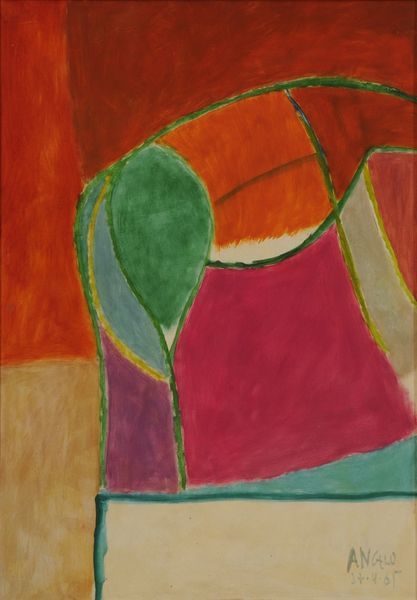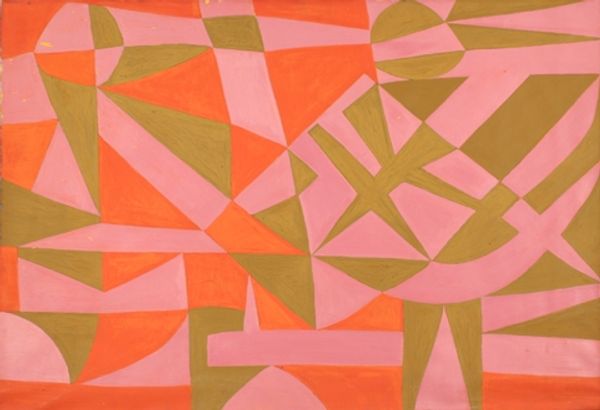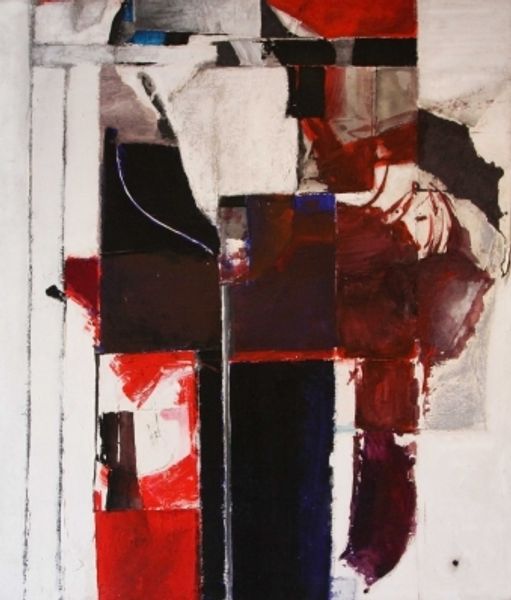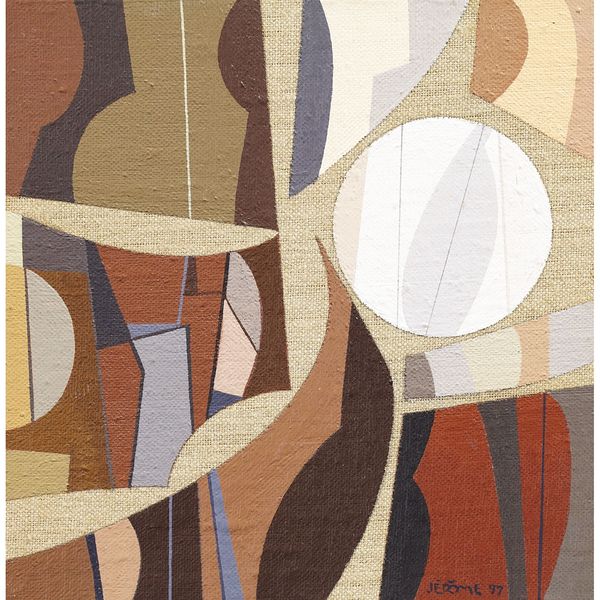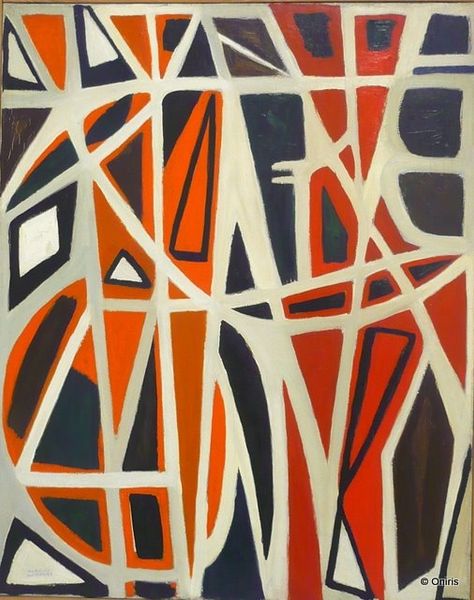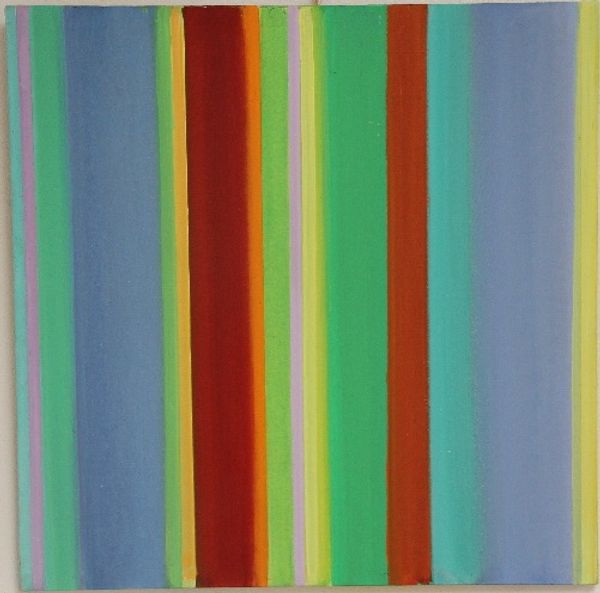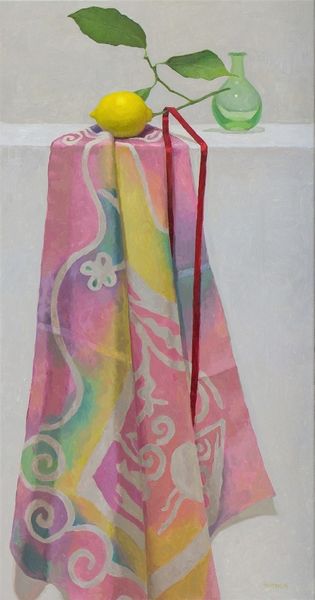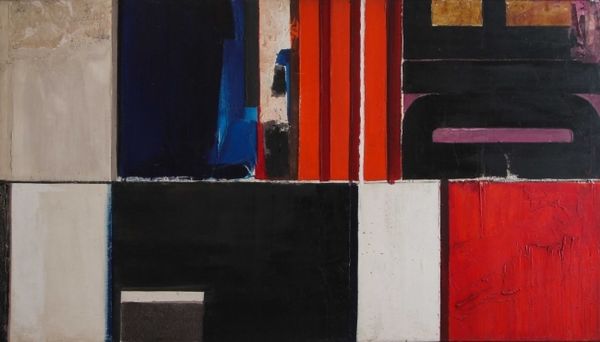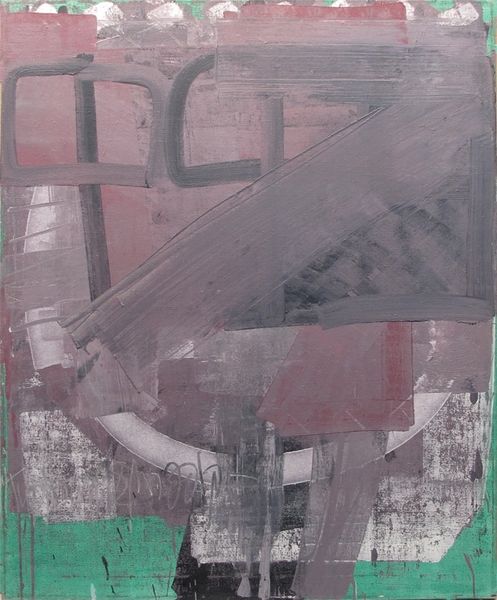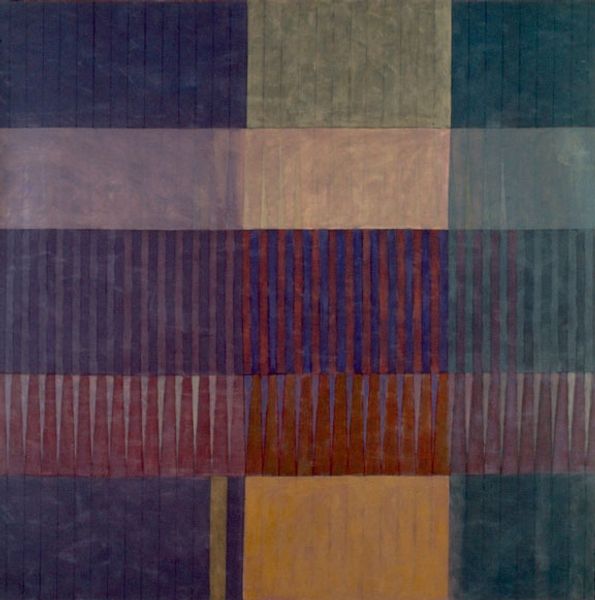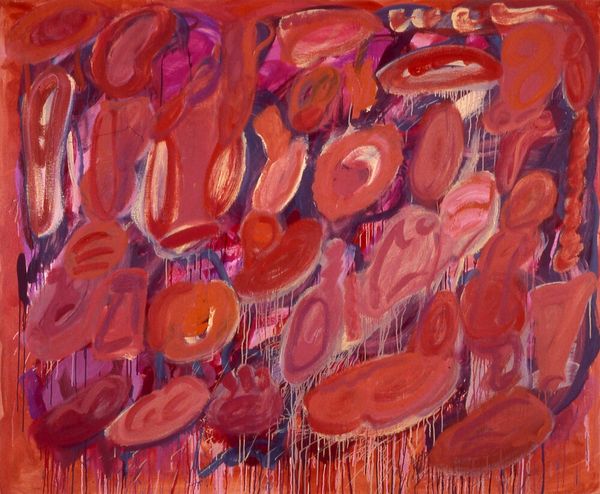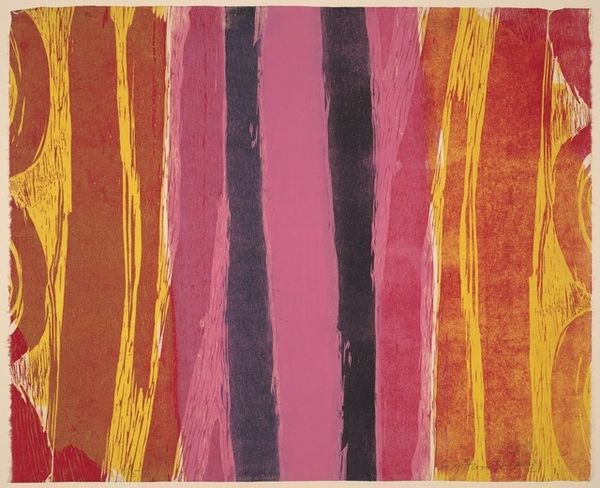
mixed-media, painting, acrylic-paint, ink
#
mixed-media
#
abstract painting
#
painting
#
acrylic-paint
#
painted
#
abstract
#
ink
#
acrylic on canvas
#
geometric
#
abstraction
#
line
Copyright: Constantin Flondor,Fair Use
Curator: "The Growth of Trees," an abstract mixed-media piece from 1967 by Constantin Flondor, immediately strikes me as a work of contrasts and thoughtful placement. The artist layered acrylic paint and ink in geometric sections... quite arresting, don't you think? Editor: Arresting is one word. My initial impression is melancholic—it speaks to restricted growth, doesn't it? All those compartmentalized, earthy tones pushing against what is meant to be fluid and alive. It looks like a history painting about gentrification and class segregation. Curator: Well, consider the historical context: Romania in 1967. Restrictions, resourcefulness... the ready availability, or lack thereof, of materials during that era definitely informed artistic creation. What sort of acrylics were available? Where did he source his inks? These concerns shape the possibilities within the artistic process. It speaks volumes about making-do. Editor: And doesn’t that speak to larger cultural dynamics at play? State control not only shaped the means of production but also informed cultural expression, or, in many cases, repressed it. To what extent was his work directly challenging that? How were notions of nature—growth itself—used politically during that time? Curator: That may very well be. However, observe the technique: The layering, the almost architectural structuring of form using ink and paint... Look closely at where Flondor lets the materials bleed into one another. He plays with the very idea of the artificial versus the organic through material itself. It isn't just the theme that contains commentary, but the material's ability to obey its medium as a crucial component. Editor: Right, and those almost imperceptible transgressions read to me as small acts of defiance against rigid societal structures. Art became a space, however coded, for political expression where even the limitations become part of the commentary on cultural restriction. The way that his colors are muted reminds me of limited resources of post-war Europe, which may explain this very melancholic interpretation. Curator: Precisely! These constraints arguably become tools for innovation, for unique artistry to emerge within an environment of control. The conversation goes back and forth in layers. Editor: Agreed. What seems initially to be simply an abstract study quickly unfolds as a rich document of resilience, resistance, and making do in a specific sociopolitical landscape. Thank you for taking the time to contextualize Flondor's work for me. Curator: And thank you for exploring its implications! Seeing "The Growth of Trees" from your perspective sheds further light on Flondor's artistic ingenuity under pressure.
Comments
No comments
Be the first to comment and join the conversation on the ultimate creative platform.
